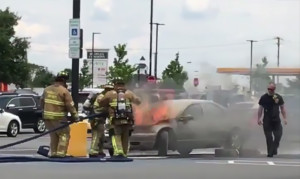 Fire watch guards patrol businesses and sites that are at risk of a fire. They do this to protect a company’s property, equipment, and employees from a fire outbreak.
Fire watch guards patrol businesses and sites that are at risk of a fire. They do this to protect a company’s property, equipment, and employees from a fire outbreak.
They also help prevent potential arson and trespassing. Whether you have a business that requires constant fire protection, a government agency, or a vacant lot that needs a security deterrent, a fire watch guard is the right solution.
Checking Fire Extinguishers
Fire watch guards are trained to monitor construction sites and other areas with a high fire risk. Their duties include identifying potential fire hazards and reporting them to their supervisor.
They also check fire extinguishers and other safety equipment to ensure that they are in good working order. They may also note other issues that could pose safety risks or impede emergency response teams’ ability to handle a fire.
In addition to checking the fire extinguishers in the building, they are also responsible for monitoring any electrical wires that are present. This helps them determine if any wiring is faulty or unsafe to use.
In addition, Charlotte fire watch guards are constantly attending emergency training to learn how to handle different kinds of emergencies. They can then help people before, during, and after a fire. These professionals will also be able to evacuate the building and ensure that everyone is safe.
Informing the Building Occupants
To keep the building occupants safe, a fire watch guard must notify them of any emergency that they encounter and instruct them on how to evacuate the property safely. The occupants must also be informed of any other hazards that may occur.
The fire watch guards patrol the premises to check for potential hazards and always carry a checklist. This ensures that if a fire is discovered, it is detected quickly and can be dealt with quickly.
They also monitor the safety controls, including the water sprinkler and fire alarm systems.
NFPA standards require that impairments to a required fire alarm or automatic sprinkler systems be reported to the local authority having jurisdiction (AHJ).
In addition, a professional fire watches security guard is responsible for keeping logs and reporting any abnormal circumstances, hazards, or communication with the police or fire department. This helps the AHJ decide whether a fire watch is necessary.
Activating the Fire Alarm System
The fire alarm system is the most important safety component in any building. It alerts occupants of a fire and helps them evacuate the building.
The alarm can either be audible or visual. Some systems combine both to help mobilize occupants and ensure they evacuate the building as soon as possible.
An alarm can come from various devices, including smoke and heat detectors, sprinklers, and extinguishers. These are connected to a control panel that manages the entire system and reports on its status.
Depending on the type of fire alarm system, some panels notify remote alarm monitoring stations, which then call emergency services. This is helpful for larger facilities with multiple buildings.
Evacuating the Building
In an emergency, a fire watch guard will help occupants safely evacuate the building. They will also activate the fire alarm system and water sprinklers to notify emergency responders and assist evacuees.
Evacuation routes are marked on doors and in stairwells, and occupants should familiarize themselves with these routes. It is always safest to exit the building via a stairwell, rather than an elevator.
Be aware of occupants with disabilities who are trying to leave the building and offer assistance where possible. In addition, buildings often have Evacu-Trac devices to aid individuals who are physically impaired.
During an evacuation, everyone needs to follow the directions of the College’s Emergency Response Team or emergency responders to safely move out of the building and reassemble at the designated Assembly Area. Depending on the circumstances, this area may be on campus or in a remote location.


